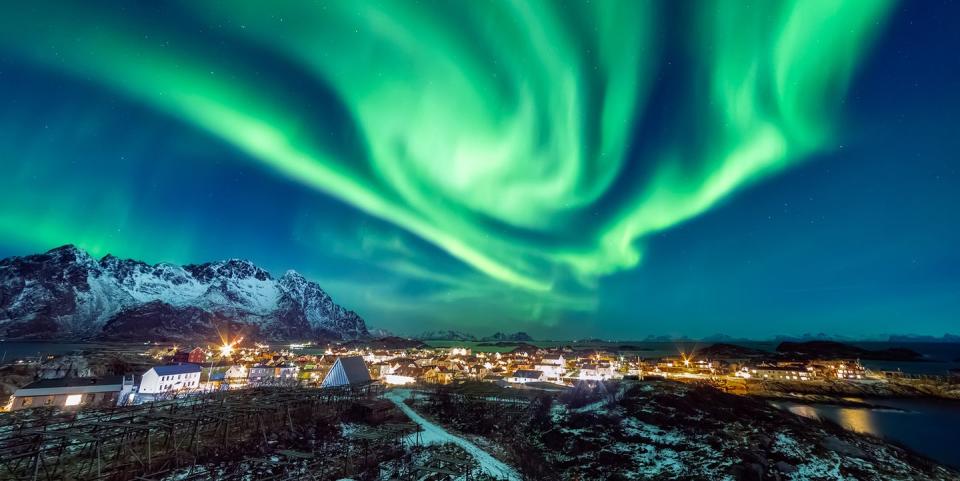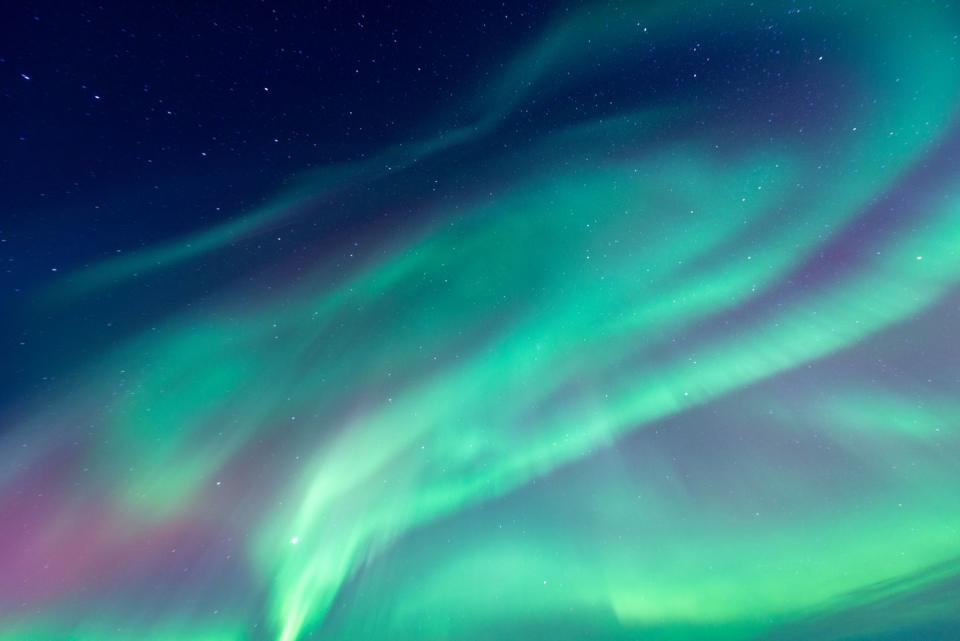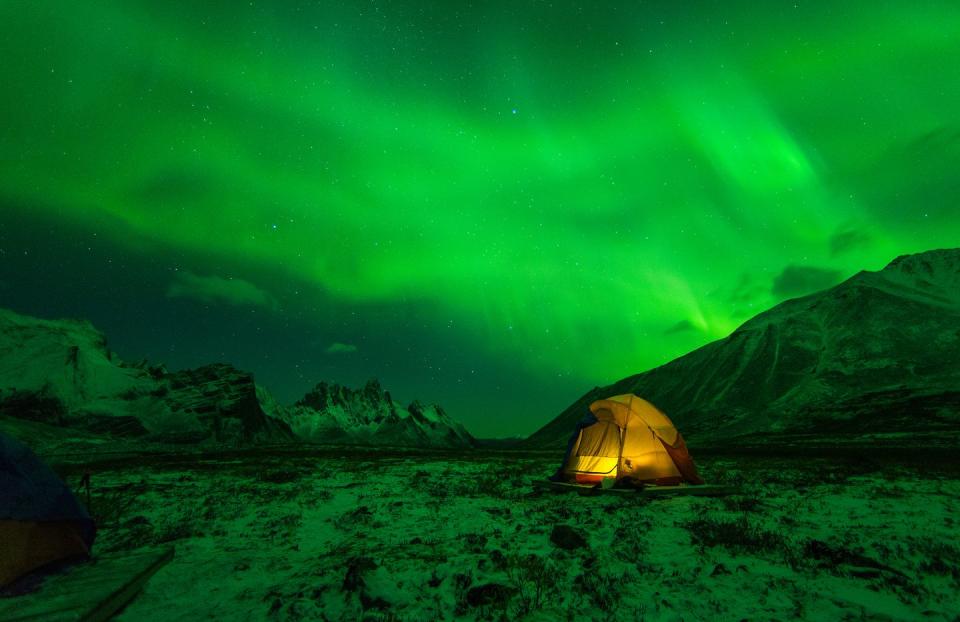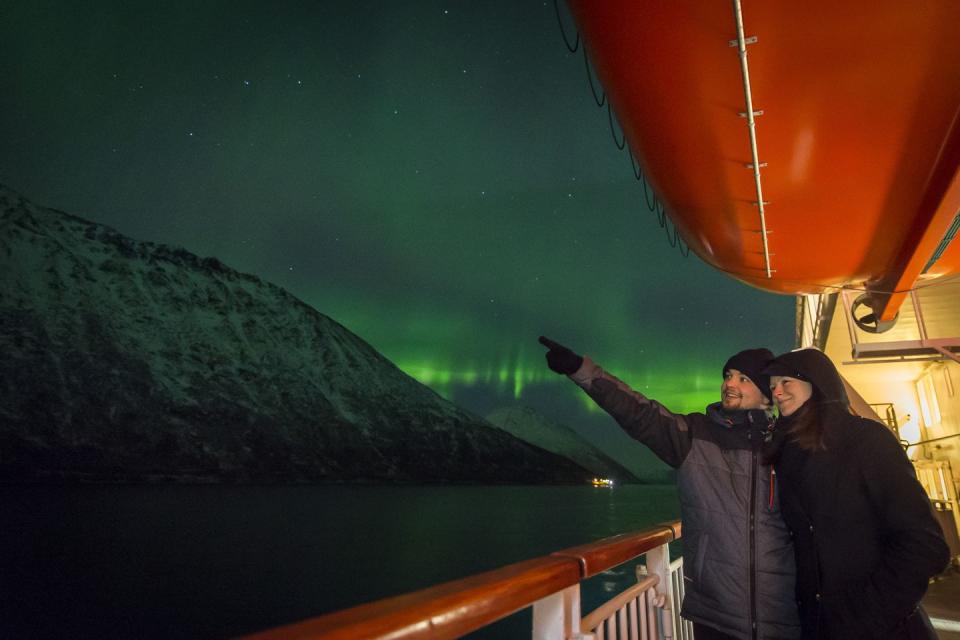What are the Northern Lights and where can I see them?

For centuries, the strange and colourful apparitions in the Arctic skies, known as Aurora Borealis or the Northern Lights, have fascinated humans, but many people still wonder what are the Northern Lights and where in the world they can be seen.
SEE THE NORTHERN LIGHTS WITH PRIMA
A bucket list holiday and a once-in-a-lifetime experience, seeing the Northern Lights is like a dream come true. The romance and magic of the dancing green lights in the sky has to be seen to be believed. But what are the Northern Lights and when is the best time to see them?
We answer some of the most asked-about Northern Lights questions to inspire you to chase them this winter. And in case you're wondering why we're talking to you about icy Northern Lights escapes just before summer, now is the perfect time to get planning a trip for winter, before the popular holiday sells out.
If you've already decided you'd like to see the Northern Lights this year, you'll want to check out Prima's exclusive Northern Lights cruise to Norway, which gives you 15 nights to hunt for the lights. It includes a Northern Lights guarantee, so if you don't manage to see them, you'll get another cruise for free.
What causes the Northern Lights?
Caused by the collision of electrons and protons with gas particles, the Northern Lights are a naturally occurring phenomenon that illuminate the skies in ephemeral, shifting hues of green, blue, pink and red.
When charged particles produced by chemical reactions in the sun break free they are blasted to earth by the ‘solar wind’, and enter the earth’s atmosphere at its poles, where the magnetic force that would normally deflect them is at its weakest.
Upon entry, these particles collide with gases such as oxygen (turning green or occasionally red at higher altitudes) and nitrogen (turning blue or purple) in the air — the result is a light show like no other.

Where can I see the Northern Lights?
Though they can sometimes be seen in northerly parts of Scotland during peak years, your best chance of catching a glimpse of the lights – or hopefully a sustained appearance – is near the Arctic Circle in Scandinavia or Canada.
One of the most popular European destinations for seeing them is Norway, thanks to its picturesque towns, pretty fjords and spectacular cliffs, as well as its wealth of captivating Viking history. Norwegian towns such as Tromsø and Trondheim are some of the best places in the world to witness the Aurora Borealis and are set in stunning, snow-laden landscapes with attractive architecture.

Other locations where Northern Lights sightings are commonly reported include the Icelandic capital of Reykjavik, a quirky city with a cool cultural scene and plenty of bars, restaurants and shops, and the sparsely populated city of Ilulissat in Greenland, where activities like dog sledding and Arctic caving will keep you occupied during the day. All of these destinations are worth visiting during autumn and winter to maximise your chances of seeing the lights.

For a more remote, wild experience, head to the Yukon territory of Canada throughout the autumn and winter months, where you can immerse yourself in the natural world, and see the dancing green curtains of the Aurora Borealis.
When is the best time of year to see the Northern Lights?
Northern Lights season runs from late September to early April in the Arctic, so trips at this time of year will give you the best chance of seeing the Aurora.
During the autumn and winter in Norway’s Arctic Circle and above you’re extremely likely to spot the Northern Lights whenever the sky is dark and clear. Optimal conditions for aurora spotting are when the weather is dry, cold, and clear, though it’s sometimes even possible to glimpse them through thin or broken clouds.

If you plan your trip during the summer, you will likely be disappointed, as the skies will be too bright, with near continuous daylight. So always research the hours of light when planning your trip to see the Northern Lights in Norway.
Prima’s cruise to Norway with Hurtigruten has departures between late September and mid-December, the ideal time of year to give you the best chance of a jaw-dropping display.
Scientists studying the phenomenon have discovered that the appearance of the Aurora is cyclical, with a peak occurring approximately every 11 years, when they will be visible on the greatest number of nights in the year. The next peak is likely to be around 2025 to 20226, but there are still plenty of opportunities to see the Northern Lights by travelling sufficiently far north during the next few years.
When choosing the perfect Aurora-spotting destination, it’s best to pick somewhere with minimal light pollution, for obvious reasons, and head out in the pitch black to see them, usually around midnight local time.

How can I see the Northern Lights?
Now that you know all about the Northern Lights and the best time of year to see them, it’s time to think about how to book a trip. There are various ways you can enjoy a Northern Lights trip, from simple weekend escapes in a stylish hotel in Reykjavik, to longer land tours through Greenland’s frozen landscapes and expedition cruises in Norway.
There are several operators who specialise in Northern Lights tours, like Aurora Expeditions, Viking and Hurtigruten. The benefit of travelling on a group expedition rather than a solo trip is that you will be in the safe hands of experts who know exactly how to maximise your chances of seeing the lights.

Take Prima's 15-night expedition cruise to Norway with Hurtigruten. You will be travelling in the company of a team of experts who will not only make sure you have the best chance of seeing the Northern Lights, but will be on board to give insightful talks in the ship’s Science Centre, where you can learn more about the incredible landscapes and natural phenomena that you’ll witness on the trip.
There are many benefits to choosing a cruise for your Northern Lights expedition. Specialist ships allow you to travel to remote corners that you don't have access to on land, and lengthier stays on board a ship heighten your chances of seeing the dazzling display in the skies above.
Want to see the spectacular light display for yourself? Check out Prima's exclusive Northern Lights cruise for a once-in-a-lifetime experience.
You Might Also Like

 Yahoo Sport
Yahoo Sport 





































